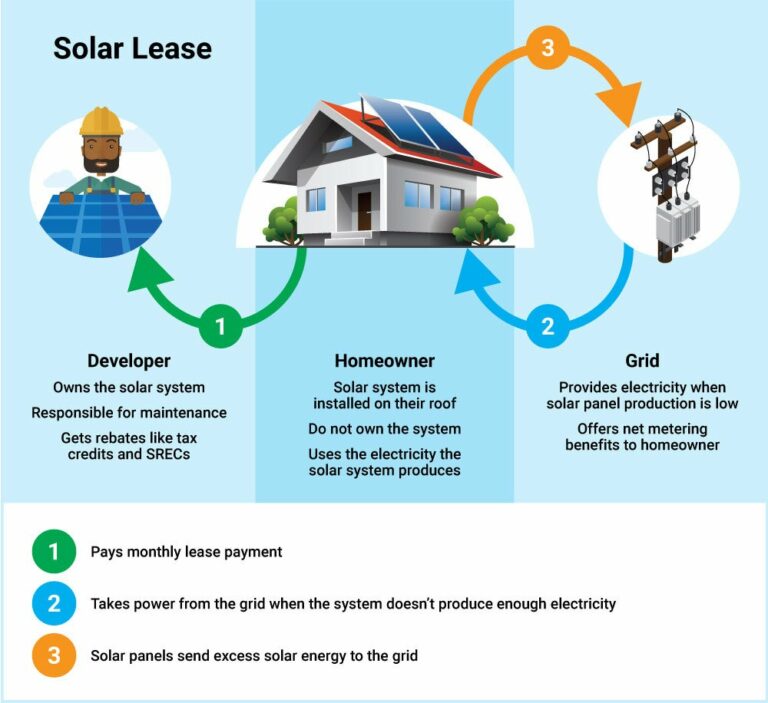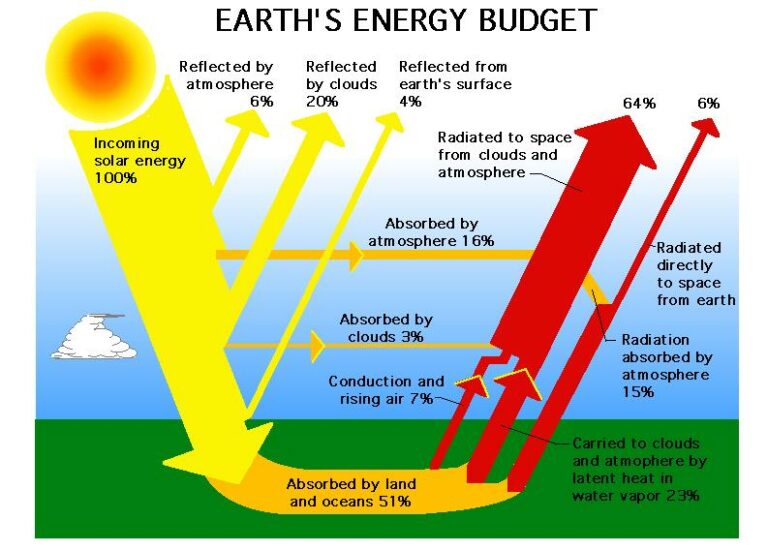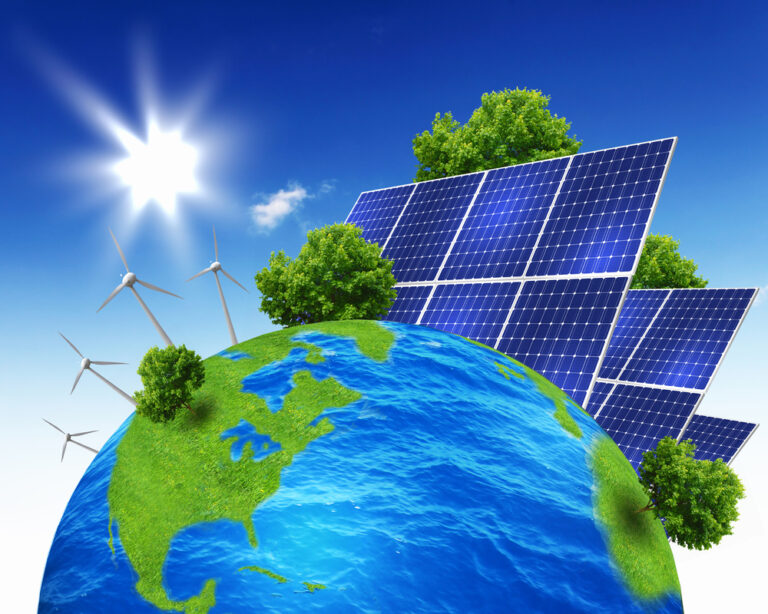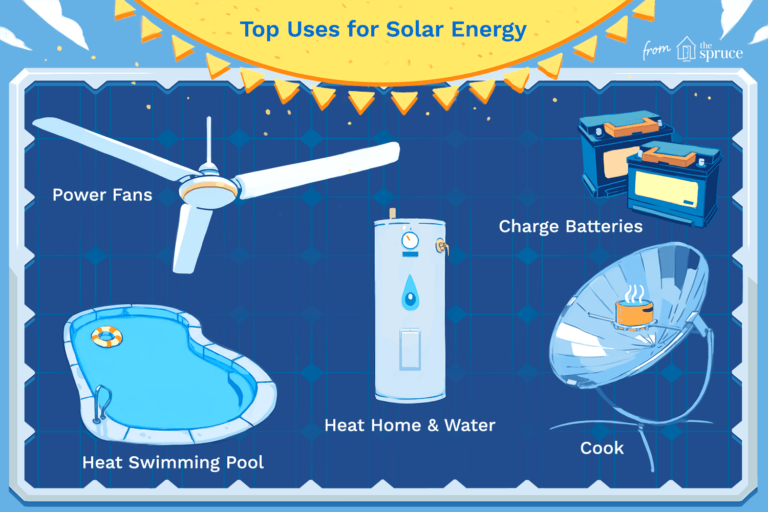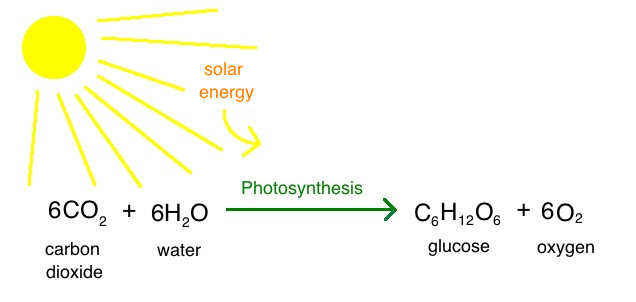Which Cellular Process Converts Solar Energy Into Chemical Energy?
Have you ever wondered how plants are able to convert sunlight into energy? Well, the answer lies in a fascinating cellular process! So, which cellular process converts solar energy into chemical energy? Let’s dive in and explore this captivating topic together.
In the world of biology, this process is known as photosynthesis. It’s like a magical superpower that plants possess, enabling them to harness the sun’s energy and transform it into a form they can use. Isn’t that mind-blowing? It’s like plants have their very own solar power panels!
During photosynthesis, plants use a pigment called chlorophyll to capture sunlight. They combine this light energy with carbon dioxide and water to produce glucose, a type of sugar that serves as their primary source of energy. This remarkable process not only powers plants but also plays a crucial role in maintaining the balance of oxygen and carbon dioxide in our atmosphere.
So, the next time you see a plant basking in the sunlight, take a moment to appreciate the incredible cellular process at work. From solar energy to chemical energy, photosynthesis truly showcases the wonders of nature’s design. Let’s delve deeper and uncover more fascinating details about this amazing process in the following sections. Stay tuned!
Photosynthesis is the cellular process that converts solar energy into chemical energy. Through this process, plants and some other organisms use sunlight, water, and carbon dioxide to produce glucose and oxygen. The chlorophyll pigment in plant cells captures sunlight and converts it into chemical energy in the form of glucose. This energy-rich molecule is then used by the organism for various metabolic activities. Photosynthesis plays a crucial role in the Earth’s ecosystem, providing oxygen and food for other organisms.

Which Cellular Process Converts Solar Energy into Chemical Energy?
Solar energy is one of the most abundant energy sources on Earth. It provides a constant supply of clean and renewable energy. But how does nature harness this energy and convert it into a form that can be used by living organisms? That’s where the cellular process of photosynthesis comes in. In this article, we will explore the fascinating world of photosynthesis and uncover how it converts solar energy into chemical energy.
The Process of Photosynthesis: A Closer Look
Photosynthesis is a complex biochemical process that occurs in the cells of plants, algae, and some bacteria. It is responsible for converting sunlight, water, and carbon dioxide into glucose and oxygen through a series of chemical reactions. This process takes place in specialized structures called chloroplasts, which are found within the cells of photosynthetic organisms.
1. Light-Dependent Reactions
The first stage of photosynthesis is known as the light-dependent reactions. These reactions occur in the thylakoid membranes of the chloroplasts. The thylakoids contain pigments such as chlorophyll, which absorb light energy from the sun. When light energy is absorbed by the chlorophyll molecules, it excites the electrons, triggering a series of electron transport reactions.
Photosynthesis is a complex biochemical process that occurs in the cells of plants, algae, and some bacteria. It is responsible for converting sunlight, water, and carbon dioxide into glucose and oxygen through a series of chemical reactions. This process takes place in specialized structures called chloroplasts, which are found within the cells of photosynthetic organisms.
1. Light-Dependent Reactions
The first stage of photosynthesis is known as the light-dependent reactions. These reactions occur in the thylakoid membranes of the chloroplasts. The thylakoids contain pigments such as chlorophyll, which absorb light energy from the sun. When light energy is absorbed by the chlorophyll molecules, it excites the electrons, triggering a series of electron transport reactions.
During these reactions, water molecules are split, releasing electrons and oxygen. The energized electrons are then passed through a chain of protein complexes called the electron transport chain. As the electrons move through this chain, they release energy, which is used to pump protons (H+) into the thylakoid space. This creates a concentration gradient of protons, which drives ATP synthesis by an enzyme called ATP synthase.
Simultaneously, the energized electrons are also used to reduce a molecule called NADP+ to NADPH. This molecule acts as a carrier of high-energy electrons and will be used in the next stage of photosynthesis.
2. Calvin Cycle (Light-Independent Reactions)
The second stage of photosynthesis is known as the Calvin Cycle, also known as the light-independent reactions. This cycle takes place in the stroma of the chloroplasts and utilizes the ATP and NADPH produced during the light-dependent reactions.
During the Calvin Cycle, carbon dioxide molecules from the atmosphere are captured and converted into a three-carbon compound called phosphoglycerate (PGA). This reaction is catalyzed by an enzyme called RuBisCO.
The phosphoglycerate molecules then undergo a series of chemical transformations, ultimately resulting in the production of glucose. Some of the PGA molecules are also recycled to regenerate the starting molecule, RuBP (ribulose 1,5-bisphosphate), which enables the cycle to continue.
3. Factors Affecting Photosynthesis
Several factors can influence the rate of photosynthesis. These include the intensity and quality of light, availability of water, and the concentration of carbon dioxide. Light intensity affects the rate of electron excitation in the chlorophyll, and thus the rate of ATP and NADPH production. Water is essential for the electron donor in the light-dependent reactions, while carbon dioxide is needed as a substrate for the Calvin Cycle.
Additionally, temperature also plays a crucial role in photosynthesis. Enzymes involved in the process have optimal temperature ranges, and deviations from these ranges can impair their activity. Extreme temperatures, such as freezing or scorching heat, can negatively impact photosynthesis.
4. The Significance of Photosynthesis
Photosynthesis is the fundamental process that sustains life on Earth. It not only produces glucose, which serves as a direct source of energy for plants and other organisms but also generates oxygen as a byproduct. Oxygen is released into the atmosphere, supporting the respiration of all living organisms, including humans.
Furthermore, photosynthesis is responsible for carbon fixation, the process of converting carbon dioxide into organic compounds. By absorbing carbon dioxide from the atmosphere, photosynthetic organisms play a crucial role in mitigating climate change by reducing the greenhouse effect.
In summary, photosynthesis is the remarkable cellular process that converts solar energy into chemical energy. Through a series of light-dependent and light-independent reactions, photosynthesis generates glucose and oxygen, providing energy for life on Earth and contributing to the balance of the atmosphere. Understanding photosynthesis is not only essential for our knowledge of biology but also for developing sustainable energy solutions for the future.
Key Takeaways
- The cellular process that converts solar energy into chemical energy is called photosynthesis.
- Photosynthesis takes place in plants, algae, and some bacteria.
- During photosynthesis, sunlight is captured by chlorophyll in the cells.
- This captured energy is used to convert carbon dioxide and water into glucose and oxygen.
- Glucose is a form of chemical energy that plants use for growth and metabolism.
Frequently Asked Questions
Welcome to our list of frequently asked questions about the cellular process that converts solar energy into chemical energy. We’ve compiled a series of engaging questions and insightful answers to help you better understand this topic. Read on to learn more!
Q1: How do plants convert solar energy into chemical energy?
Plants convert solar energy into chemical energy through a process called photosynthesis. During photosynthesis, plants use chlorophyll, a pigment found in their leaves, to capture sunlight. This sunlight energy is then used to convert water and carbon dioxide into glucose and oxygen. This chemical energy, in the form of glucose, is stored in the plants and can be used for growth, maintenance, or other energy needs.
Photosynthesis is a crucial process not only for providing energy to plants but also for maintaining Earth’s oxygen levels. It is responsible for producing the majority of the oxygen we breathe and plays a vital role in the global carbon cycle.
Q2: Are all organisms capable of converting solar energy into chemical energy?
No, not all organisms are capable of directly converting solar energy into chemical energy like plants do. Photosynthesis is a process unique to autotrophic organisms, mainly plants and some types of bacteria. These organisms have specialized structures, such as chloroplasts in plants, that allow them to capture sunlight and convert it into chemical energy through photosynthesis.
Heterotrophic organisms, including animals and fungi, cannot directly convert solar energy into chemical energy. Instead, they rely on other organisms, either directly or indirectly, for their energy needs. Heterotrophs obtain their energy by consuming organic matter, like plants or other animals, that have already converted solar energy into chemical energy through photosynthesis.
Q3: Can humans convert solar energy into chemical energy?
No, humans cannot directly convert solar energy into chemical energy like plants do through photosynthesis. Although humans use energy from the sun indirectly by consuming plants and plant-based products, our bodies don’t have the ability to produce energy from sunlight alone.
However, humans can harness solar energy through technology like solar panels. Solar panels convert sunlight into electricity, which can then be used to power various devices or be stored for later use. While this is a different process than photosynthesis, it allows us to utilize solar energy in a way that benefits our energy needs.
Q4: Do all organisms use the same cellular process to convert solar energy into chemical energy?
No, not all organisms use the same cellular process to convert solar energy into chemical energy. Plant cells primarily rely on photosynthesis, as discussed earlier. On the other hand, certain types of bacteria use a process called chemosynthesis to convert energy from chemical compounds into usable energy.
Chemosynthesis typically occurs in environments without sunlight, such as deep-sea hydrothermal vents or underground caves. These bacteria are capable of utilizing chemical compounds like hydrogen sulfide instead of sunlight to produce their own food and generate energy.
Q5: Can photosynthesis occur in any kind of light?
No, photosynthesis can only occur in specific wavelengths of light known as the visible light spectrum. Visible light ranges from violet to red and is what we perceive as the colors of the rainbow. Chlorophyll, the pigment responsible for capturing sunlight during photosynthesis, absorbs light most efficiently in the blue and red regions of the spectrum.
While plants can still perform photosynthesis with light in other parts of the spectrum, their efficiency decreases. This is why plants appear green to our eyes because they reflect green light, which is not as effectively absorbed by chlorophyll.
Conversion of Light Energy to Chemical Energy in Photosynthesis : Biology Lessons
Summary:
So, how does solar energy become chemical energy in cells? It’s all thanks to a process called photosynthesis. Plants and some bacteria use a special molecule called chlorophyll to capture sunlight and convert it into food. This food, known as glucose, is a type of sugar that contains chemical energy. And this chemical energy gets stored in the cells for later use.
But that’s not all! Another cellular process, known as cellular respiration, takes place to release the stored energy from glucose. It happens in the mitochondria, the “powerhouses” of the cell. Through a series of chemical reactions, glucose is broken down, and the stored energy is released in the form of a molecule called ATP. This ATP serves as a source of energy for various cell activities, helping us run, think, and do pretty much everything we need to do. So, in a nutshell, solar energy is converted into chemical energy through the amazing processes of photosynthesis in plants and cellular respiration in all living organisms.

